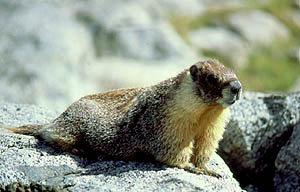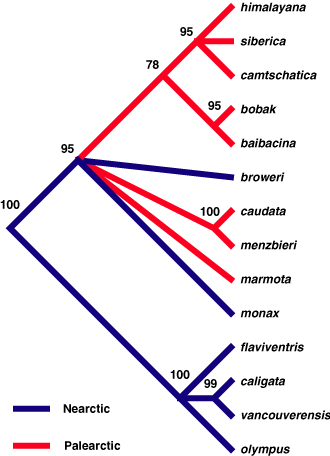1999. Molecular phylogeny of the marmots (Rodentia: Sciuridae): tests of evolutionary and biogeographic hypotheses. Steppan, Scott. J., Mikhail R. Akhverdyan, Elena A. Lyapunova, Nikolai N. Vorontsov, Darrilyn G. Fraser, Robert S. Hoffmann, and Michael J. Braun. Systematic Biology 48(4):715-734. |

